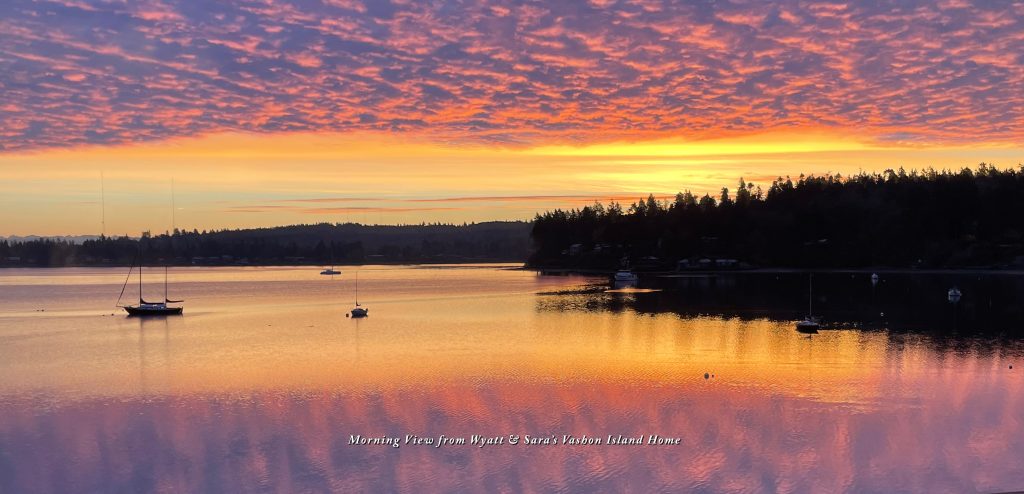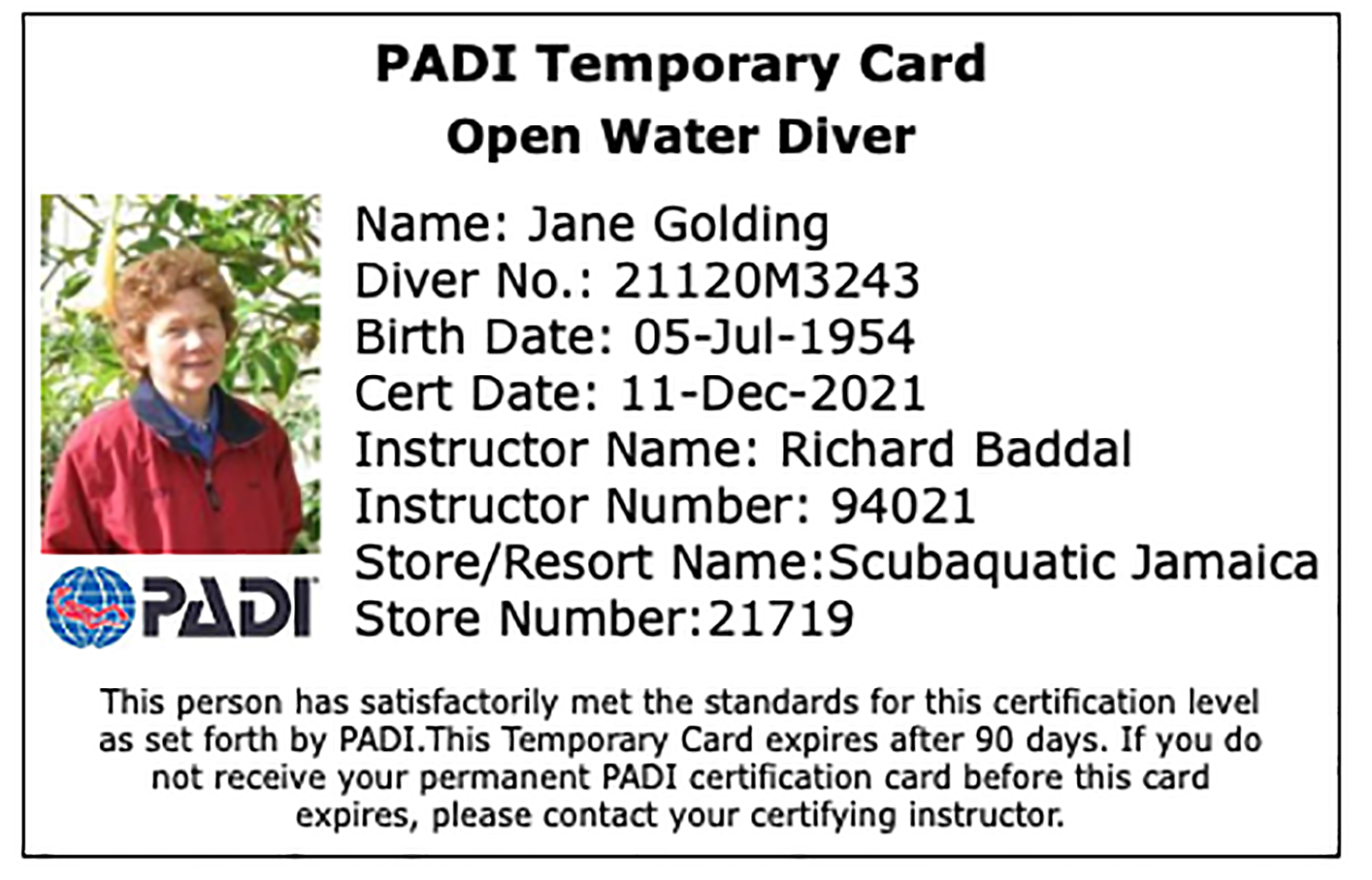
Jamaica: Fish In Water (SCUBA)
After months of online learning and test-taking at home, we finished the written portion of our PADI Open Water Diver education. All that remained, according to what we read online, were the “fins-on” portions of the course: 5 confined water dive sessions in a pool and 4 open water dives in warm Caribbean waters. Like everything else on this trip, that was not exactly what happened, but the result was fantastic nonetheless.
Our expectations were that most of our time in Jamaica would be taken up with learning to dive. Nine separate diving sessions sounded to us like a time-consuming undertaking, but what followed left us with time to do other things (see the post on other water activities).
Learning SCUBA
Diving at Runaway Bay: A Slideshow
Click on a photo to enlarge it
On our first full day, we met our divemaster, “Richard, but everyone calls me Gandhi”, and got outfitted with wet suits, masks, fins tanks, weight belts and BCD vests, which provide flotation and storage compartments for all the necessary accoutrements of diving. Then we trekked off to the pool, a few hundred yards away. We carried our fins and mask in hand, but we were not yet accustomed to this new gear we were wearing, and its surprising amount of additional weight. Fortunately, the walk to the pool was uneventful.
The pools at Bahia Principe are like moats that meander throughout the resort. We noticed that none of the pools is deeper than 4 feet. We thought this was odd since we assumed there were lessons that required a depth of more than 4 feet of water.
The next hour to an hour-and-a-half of pool instruction was very informative however, and seemed to hit all the important facets of diving about which we had read and studied. This was a good first lesson and probably all we could absorb. Additional lessons in the pool, I thought, should give us the confidence to dive into the sea.
When we returned to the dive shack, we were met by five other divers who were suited up and ready to go. It hadn’t quite sunk in yet, but we were soon climbing into a boat and heading out to sea. It was just Day 1 and we were about to descend into the Caribbean. In my case, I was hoping not to swallow as much water as I did in the pool.
It’s fair to say that we were both a little nervous and apprehensive. We were just getting used to the awkwardness and weight of our outfit, when we were perched on the side of the dive boat about to roll backwards into the sea.
The sensation was like no other we had experienced. Overboard, surrounded by clouds of bubbles in the warm water, we were just trying to remember what to do. As previously instructed, we swam to the mooring line and then followed it down s-l-o-w-l-y to our gathering place approximately 30 feet below the surface, adjusting to the pressure changes every 3 seconds or so to protect our ears and sinus cavities. It is a completely new world for us, and initially there was too much to remember to fully appreciate its wonder. At that point we were concentrating on remembering to breath, keeping the mouthpiece securely in our mouths and adjusting to the increased pressures (equalizing).
It is difficult to describe what we saw on these dives because it was nothing like we had seen before. We glided through canyons of coral reefs that were alive with beautiful (but unfamiliar) flora and fauna. We passed by tons of iridescent fish of many hues, most of which we could not identify. Occasionally, we spied a lion fish or a sting ray, but we stayed a safe distance away from any threat. At one point, a sea turtle swam through our vision, turned around and swam back again. It was all very ethereal.
This first dives and the ensuing ones lasted about 30-40 minutes depending on the amount of air left in our tanks. Our divemaster set 1000 psi as the amount remaining in our tanks as the indicator of when we would ascend s-l-o-w-l-y up to the boat. When we began the dives, our tanks had been filled to 3000 psi.
We enjoyed the nautical sightseeing most of all, but we also worked on our underwater skills while we were submerged. Gandhi impressed upon us the need for vigilance regarding our remaining air supply and we practiced adjusting our depth and buoyancy as we moved though the undulating terrain. For the most part, visibility was clear, but it got somewhat murkier in our later dives as the underwater surge increased. At all times we could see all the members of our group and , as newbies, we made sure to keep an eye on Gandhi. For his part, he spent much of the dives, on his back (otter style) watching out for us. It was appreciated.
That first day we dove was a Wednesday. Thursday was Gandhi’s day off, so we had a day to try to absorb all the new information thrown at us and to have some time to see more of Jamaica. (see the Jamaica: Other Water Activities post).
The Goal
Click on a photo to enlarge it
We dove again Friday morning at 8. We were joined by a Filipino woman and a British man who had both been diving a while. The man, Clive, had been on scene for the rescue of the Thai soccer team the year before and figured he had clocked at least 6000 dives in his life.
The visibility on this second dive was better than the first and we felt more acclimated to the routine. As we became more comfortable, we began to see more, which increased our enjoyment. When we surfaced, we both expressed a newfound enthusiasm borne of increased comfort and wonder. It was a great dive and a relief that we could actually do this.
Much to our surprise, the crew switched out our tanks on the boat and, after a 30-minute surface interval, we were rolling backward into the sea once more. There was more movement in the water on this dive, which resulted less visibility. We had no trouble keeping track of one another, but the reduced visibility was a little eerie, especially when we swam to a cliff’s edge and peered into what looked like an abyss. It was on this third dive that we began to sense the rhythm of the water, a feeling that would stay with us back on land.
The following day’s dive was to be our last qualifying dive. When we got to the dive shack there were 8 divers there who obviously knew their way around the dive shack. They all knew each other and were obviously very experienced divers. It was a little intimidating thinking that we would be diving with such a large group of seasoned veterans, and we were heartened to find out that they were going out on their own, while we were dive off a second boat with Clive, Gandhi and two other divers who were pretty green. Even though visibility was not as clear, by the time we surfaced, we had reached a comfort level with diving that was reassuring. We qualified for our Open Diver certification which allows us to rent SCUBA equipment from any PADI dive shop in the world so we could improve on our newfound skills.
















